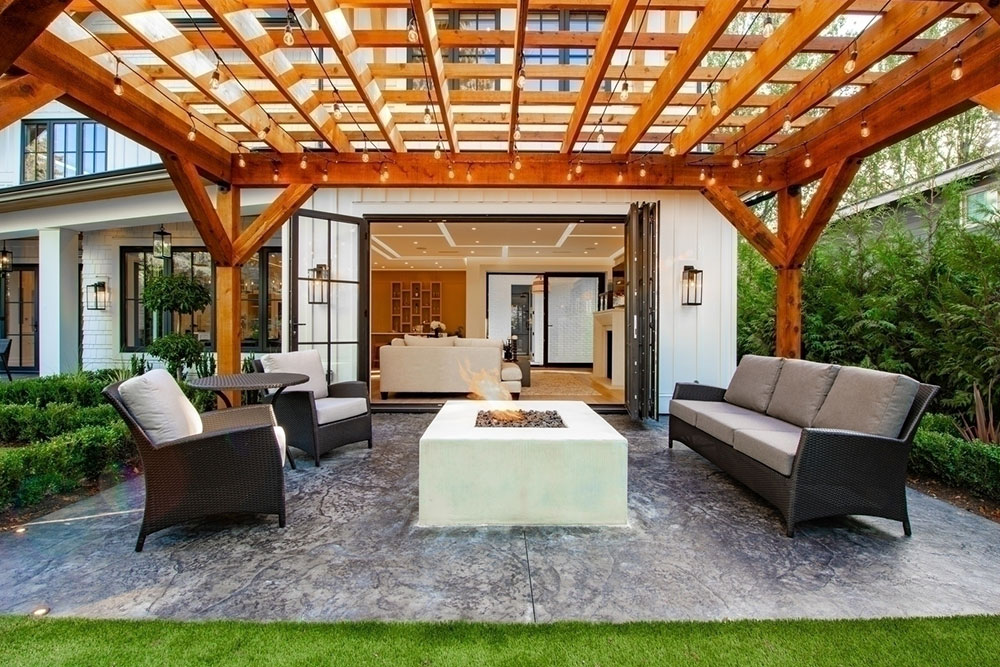9 Types of Pergolas and Their Benefits
Pergolas are stylish outdoor structures with supporting columns and roofing grids that provide shelter. Usually, they have seating arrangements underneath and cloth-based covers or nets. There are a variety of pergola designs, some offering partial shade while others with cross beams overhead. These structures can also be decorated with climbing plants. Different pergolas serve different purposes, and knowing the types and their benefits can help one choose the best option for their outdoor space.

Pergolas versus other outdoor structures
There are several outdoor structures with similar functions, like gazebos, canopies, or pavilions, but they are often fully enclosed or have solid roofs that provide complete shade and protection. Pergolas, on the other hand, are designed to allow sunlight in through their slatted roofs. In most cases, pergolas offer shade in a garden while blending in with nature with the help of creepers or vines added to the structures.
Types of pergolas and their benefits
Pergolas are uncomplicated constructions that can be easily upgraded or customized to suit different outdoor spaces. They can be divided into different types based on the materials used, design, and other functionalities.
1. Wood pergolas
Typically preferred by those who want a more natural look for their outdoor arrangements, wood pergola structures are easy to maintain and blend seamlessly with garden landscapes. They have a warm and inviting look. They are usually costlier than other types of materials, but prices vary according to sizes and styles of structures.
2. Metal pergolas
Metal is also one of the most common materials used for building pergolas. They are incredibly sturdy and also cheaper than other pergola materials. Here, aluminum pergolas are powder-coated, which makes their paint last longer and their structure more stable than wooden variants. The metal structures require little to no maintenance but may need simple cleanup from time to time. Additionally, they can withstand harsh sunlight and weather conditions. Also, they offer a wider color palette and texture options. These structures are also lightweight but can be relatively easily deformed compared to wooden ones.
3. Vinyl pergolas
These pergolas are usually white in color and look more formal. They require power washing once a year or so to maintain their appearance. Vinyl pergolas offer durability, low maintenance, and resistance to rot, insects, and weather damage. But those living in snowy areas may benefit more from wood or aluminum pergolas than vinyl variants.
4. Steel pergolas
Easy to erect, these pergolas are better suited for modern landscapes. They are pretty strong and sturdy, but they are slightly more complicated to build, making them more expensive than regular metal ones. The installation may also require special equipment and the help of professionals.
Apart from these variants, there are also pergolas that use multiple materials, including plastic, stone, and brick, to achieve the best of both materials.
5. Glass pergolas
These structures are incredibly popular for their stylish and modern look. Glass pergolas have vertical pillars that support the structure. Glass can be used for the roof and even on the sides if needed. The biggest benefit of a glass pergola is its ability to allow sunlight to pass through and keep dust, rain, and other elements at bay. Using toughened glass can minimize the risk of breakage or damage due to changing weather conditions. The best type of glass for pergolas is laminated or frosted glass, which provides safety and durability. One can choose to place the glass panels in a sloping manner to ensure rainwater flows effortlessly and is easier to clean.
6. Round glass pergolas
As the name suggests, these pergolas feature a circular framework and are topped with glass panels. They blend well with modern aesthetics and give an elegant look to gardens, patios, and other outdoor living areas. They protect decently from natural elements and offer protection from UV rays while also allowing the necessary rays to filter through. The round shape adds a unique architectural element to the house, and since they are easy to maintain and durable, they can be a good addition to the living space.
7. Arched pergolas
These structures are more common in commercial spaces or nature-related properties. Arched pergolas are best for displaying foliage and vines, and they dress up a space beautifully. They usually don’t need pillar support if the structure extends to cover the entire length of the bridge or sidewalk.
8. Dome pergolas
These structures have curved or rounded roofs with sturdy frameworks that support their unique shapes, which contribute to visually striking outdoor views. They can be made from a variety of materials, including wood and steel. One can get creative with dome pergola designs and sizes.
9. Freestanding pergolas
These pergolas are among the most common ones, often observed in backyards or patios of residential properties. Freestanding pergolas get their name from being independent, meaning they do not require an existing structure, wall, or other architectural elements for support. They can be placed anywhere outdoors, offering one some flexibility. They are constructed with vertical posts or columns that support cross beams. One can beautify them with potted plants or vines placed at the base of these pergolas, allowing the creepers to wrap around the pillars or between the rafters. One may also use bricks or stones for the pillars.